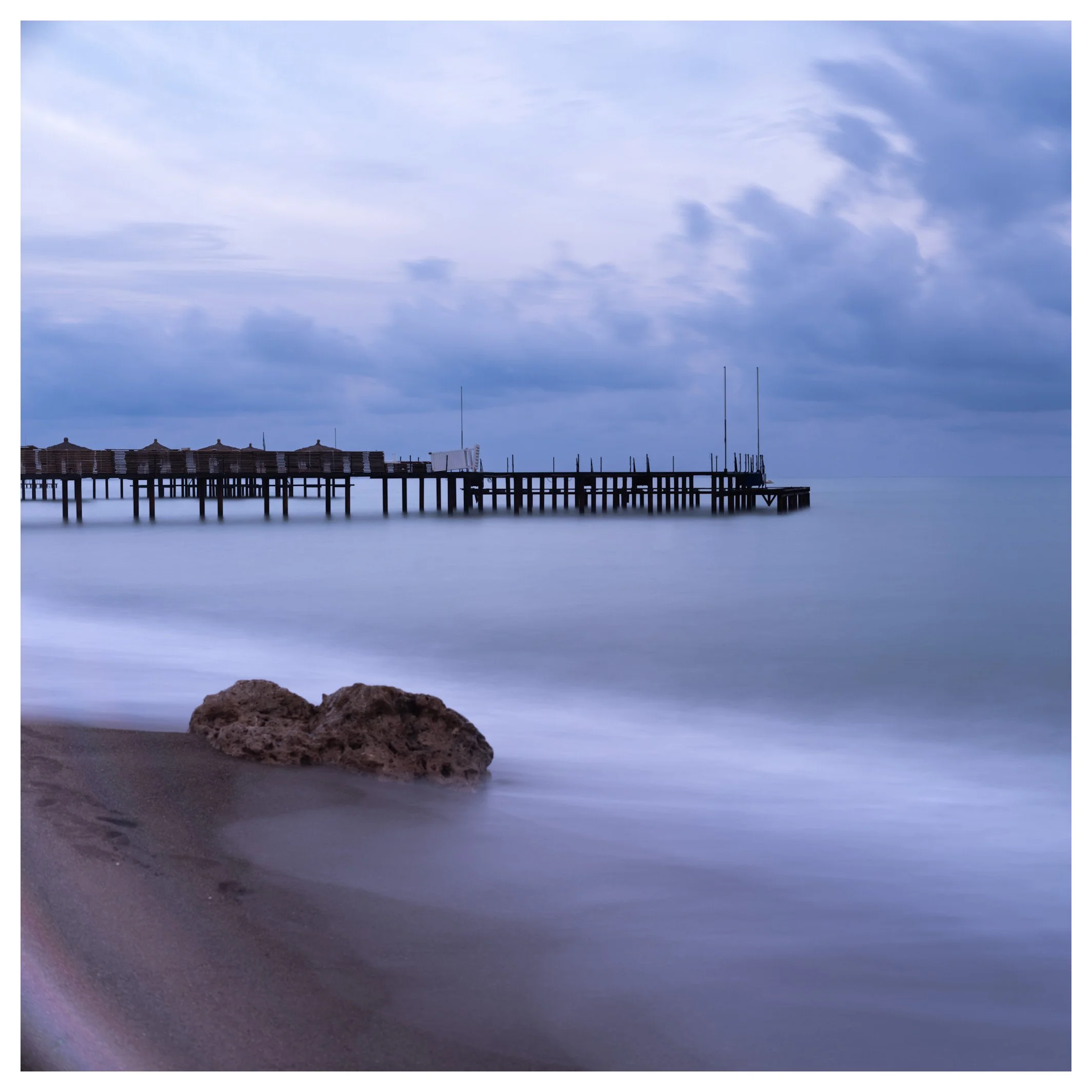The Art of Balancing Intention and Intuition
In my previous blog post, I shared how my travels began as a form of escapism—a way to seek freedom. Similarly, painting started as an escape from reality, allowing me to follow my intuition without restrictions. Each painting became a raw expression of my feelings and subconscious, a space where I could let emotions flow freely.
Painting like this gave me the opportunity to release emotions, and I delighted in the happy accidents that occurred along the way—unexpected moments of beauty and discovery.
Intuitive painting in its rawest form: using my hands and body to express pure emotion and movement.
Initially, I resisted setting intentions, fearing they might stifle my creativity. This apprehension stemmed from past experiences, particularly during a summer photography trip with my sister in Denmark.
We ventured to the Limfjord and the North Sea Coast to take photos. I wanted to take a specific type of long exposure.
What I had envisioned on that challenging photo trip: A serene, minimalist scene captured years later at a beach in Antalya, Turkey.
It seemed straightforward, but the day didn’t unfold as planned: the first location wasn’t suitable, then the lighting was too harsh and misaligned, and finally I couldn’t find alternative locations. I became increasingly frustrated and oblivious to the beauty around me. Later, as my sister and I processed our photos together, I saw the beautiful images she had captured—the fleeting moments and details I had completely missed that day.
My rigid goal had blocked my creative flow, strangling both my joy and my ability to explore other possibilities. Although my sister and I joke about it now, I’m sure she didn’t enjoy my presence on that day either.
This experience led me to believe that painting intuitively, without the constraints of intention, was the only viable approach for me. For a long time, I held tightly to that belief—until I recently participated in Louise Fletcher’s Find Your Joy course.
One exercise in the course focused on exploring our intentions. My initial reaction was resistance: ‘I can’t do that; I don’t want to do that; I won’t do that… after all, I’m an intuitive painter.’ But recalling my commitment to staying open, I began to explore how intention might coexist with my intuitive process.
Reflecting on my older paintings, I noticed they naturally fell into four distinct groups, each embodying a unique intention. You can view these on my website, where I’ve updated my gallery and included brief descriptions for each group. This realization also aligned with my journal reflections from the course, suggesting that intention may have been present all along—subtly and subconsciously.
In subsequent experiments, I discovered something surprising: in one painting, the intention revealed itself during the process. However, I also noticed that pausing to analyze my work before it was finished disrupted my flow and led to overthinking. I learned that completing a piece in one session was key to maintaining the emotional and intuitive connection.
For example, in this painting, I started with no clear aim, but as I worked, I felt drawn to capture the essence of a raven wing. Do you think I succeeded?
Raven Wing: A delicate interplay of movement and mystery — a balance of intuition and intention.
However, when I tried a more restrictive approach—limiting myself to two colors and a specific number of marks—I felt constrained, as if my expressionist style had been suffocated. This method felt overly technical and reminiscent of the restrictive experience during the photography trip with my sister. It became clear that I needed a framework to guide me, not confine me—a framework that could support my spontaneity and intuition. As discussed in the course, I also realized how essential it is for me to ‘hold intention loosely’—allowing it to guide without restricting.
But is it truly possible to balance intuition and intention when they seem so oppositional?
I don’t know yet, but I intend (pun intended 😉) to find out. In some of my explorations, I will continue to focus entirely on my intuition, tapping into my feelings and subconscious, and letting paintings emerge naturally. At the same time, I aim to create a body of work that balances intuition and intention. Much like my travels (as mentioned in my previous blog post), my work has become more introspective and focused. There are ideas and emotions I wish to express with greater clarity and purpose.
To achieve this balance, I’ve set a broad intention:
I want to explore intuitive abstract minimalism, guided by the Japanese aesthetic concepts of:
Ma (間): The space and time between, creating balance and harmony.
Wabi-Sabi (侘寂): The beauty of impermanence, incompleteness, and imperfection.
Yūgen (幽玄): Subtle, mysterious depth.
These principles offer a framework that harmonizes intention and intuition. They provide enough structure to guide me while embracing spontaneity. They encourage me to find beauty in imperfection and to appreciate the transient nature of the creative process.
I recognize that I’m at the very beginning of this journey of integration, and it’s okay to still be figuring things out. Embracing the philosophy of Wabi-Sabi, I’ve come to find beauty in the imperfect and incomplete aspects of my work. This acceptance allows me to grow—not just as an artist, but as an individual—understanding that the process itself holds value. Sharing these ideas with you now, without any final result, is part of that embrace.
Over the coming months, I’m sure we will revisit this topic several times, and I will keep you updated on how this project evolves, as it requires more than just painting. It will require learning, reflection, experimentation, and, hopefully, a great deal of joy.
Do you believe intention and intuition can be harmoniously combined? In your creative work, do you lean more towards intentionality or intuition? I would really love to hear your thoughts.



